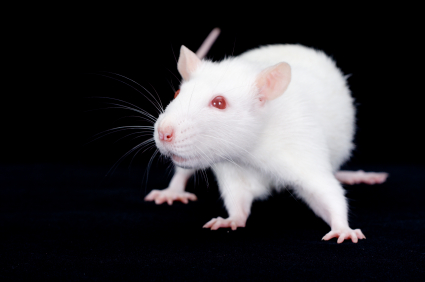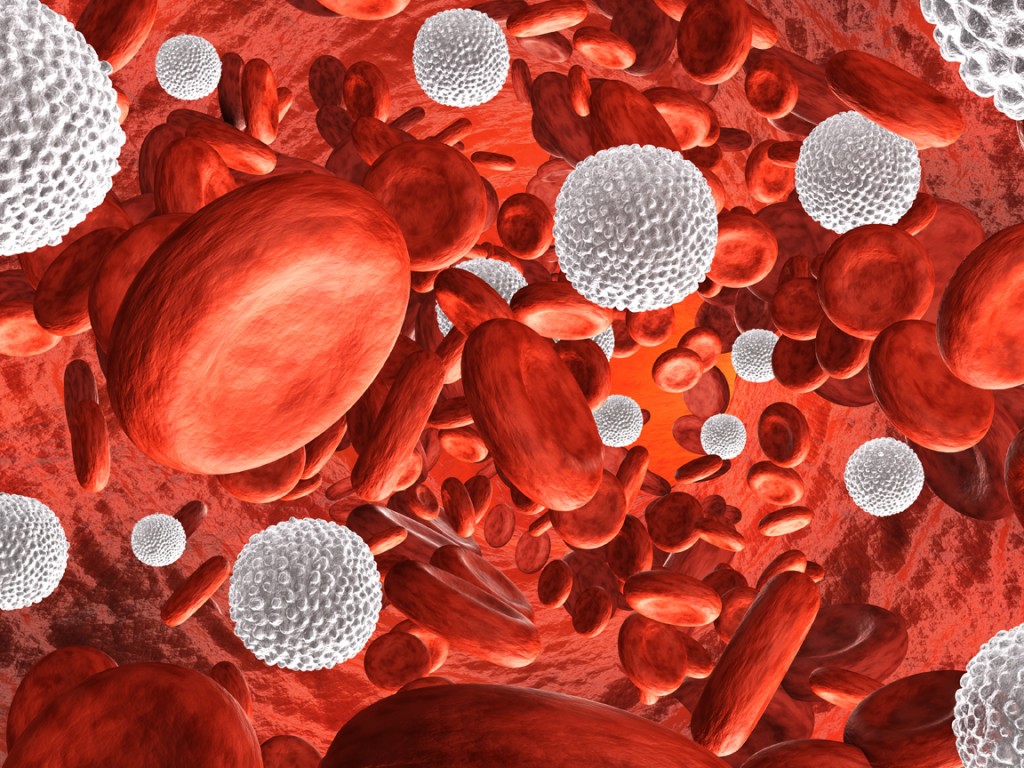Depression in Children with Inflammatory Bowel Disease
 The incidence of irritable bowel disease has been increasing in recent years as obesity has increased. At a symposium at the 2014 meeting of the American Academy of Child and Adolescent Psychiatry, researcher Eva Szigethy discussed depression in inflammatory bowel disease, which most often involves Crohn’s disease or ulcerative colitis. These conditions are associated with increased levels of inflammatory markers such as interleukin 1 (IL-1), interleukin 6 (IL-6), and TNF alpha, and these in turn induce the acute phase reactive protein called c-reactive protein (CRP). The interleukins peak in the first 12 hours after an inflammatory challenge and CRP peaks at 48 hours and returns to normal at 120 hours. Il-6 is most closely associated with the somatic symptoms of inflammation, including depression, fatigue, loss of appetite, and decreased sleep, while TNF alpha is associated with non-somatic symptoms, such as irritability.
The incidence of irritable bowel disease has been increasing in recent years as obesity has increased. At a symposium at the 2014 meeting of the American Academy of Child and Adolescent Psychiatry, researcher Eva Szigethy discussed depression in inflammatory bowel disease, which most often involves Crohn’s disease or ulcerative colitis. These conditions are associated with increased levels of inflammatory markers such as interleukin 1 (IL-1), interleukin 6 (IL-6), and TNF alpha, and these in turn induce the acute phase reactive protein called c-reactive protein (CRP). The interleukins peak in the first 12 hours after an inflammatory challenge and CRP peaks at 48 hours and returns to normal at 120 hours. Il-6 is most closely associated with the somatic symptoms of inflammation, including depression, fatigue, loss of appetite, and decreased sleep, while TNF alpha is associated with non-somatic symptoms, such as irritability.
Szigethy found that in a randomized trial of cognitive behavior therapy versus supportive therapy in children with inflammatory bowel disease, inflammatory activity decreased significantly with cognitive behavioral therapy, and the therapy particularly helped the somatic symptoms of fatigue, sleep disorder, anhedonia (loss of interest in activities once enjoyed), appetite suppression, and mood dysregulation. In contrast, when antidepressants are given to those with inflammatory bowel disease, the drugs are not particularly helpful for these somatic symptoms. Inflammatory bowel diseases are treated with steroids in 21% of patients and with a genetically engineered drug called infliximab in 30%. Adding cognitive behavioral therapy to the regimen decreases CRP and red cell sedimentation rate, an associated measure of inflammation.
The discussant of the symposium on inflammation, Frank Lotrich, described how inflammation alters sleep, and this appeared to interact with genetic risk of illness. For example, those with certain genetic variations (the short SS allele of the serotonin transporter and the val-66-met allele of proBDNF) were most likely to experience sleep disturbance following treatment with interferon gamma, a treatment that fights the virus that causes Hepatitis C, creating inflammation in the process. Interferon gamma causes depression in about one-third of the patients who take it.
Lotrich pointed out that low levels of omega-3 fatty acids are associated with increased irritability and anger, and this is related to the presence of the A allele of TNF alpha. TNF alpha is also closely linked with irritability and anger, suggesting the possible benefits of omega-3 fatty acid supplementation to target irritability and anger more selectively. This would be consistent with the data of researcher Mary A. Fristad.
Il-6 is closely associated with the somatic symptoms of depression, particularly poor sleep, which is itself associated with increases in depression. This is consistent with inflammation being a marker of poor response to antidepressants; Lotrich noted that the selective serotonin reuptake inhibitors (SSRIs), which help depression, are far more effective against the non-somatic aspects of depression and less effective against low energy, decreased interest, and fatigue. However, extrapolating from the data on inflammatory bowel disease, cognitive behavioral therapy may be most helpful on these somatic symptoms.
Methamphetamine Kills Dopamine Neurons in the Midbrain of Mice
Epidemiological studies have linked methamphetamine use to risk of Parkinson’s disease, and animal studies of the illicit drug have shown that it harms dopamine neurons. A 2014 study by Sara Ares-Santos et al. in the journal Neuropsychopharmacology compared the effects of repeated low or medium doses to those of a single high dose on mice. Loss of dopaminergic terminals, where dopamine is released, was greatest after three injections of 10mg/kg given at three-hour intervals, followed by three injections of 5 mg/kg at three-hour intervals, and a one-time dose of 30mg/kg. All of the dosages produced similar rates of degeneration of dopamine neurons via necrosis (cell destruction) and apoptosis (cell suicide) in the substantia nigra pars compacta (the part of the brain that degenerates in Parkinson’s disease) and the striatum.
Statins Can Prevent Cardiovascular Risk in Patients with Mental Disorders
 People with major mental disorders such as schizophrenia and bipolar disorder are at increased risk for medical symptoms including overweight, obesity, high cholesterol or triglycerides, diabetes, and the metabolic syndrome, all of which increase risk of cardiovascular disease (heart attack), cerebrovascular disease (or strokes), and other medical difficulties. In a 2013 review article in the journal Bipolar Disorders, researcher Chittaranjan Andrade discussed the use of statins to prevent cardiovascular events in people with major mental disorders.
People with major mental disorders such as schizophrenia and bipolar disorder are at increased risk for medical symptoms including overweight, obesity, high cholesterol or triglycerides, diabetes, and the metabolic syndrome, all of which increase risk of cardiovascular disease (heart attack), cerebrovascular disease (or strokes), and other medical difficulties. In a 2013 review article in the journal Bipolar Disorders, researcher Chittaranjan Andrade discussed the use of statins to prevent cardiovascular events in people with major mental disorders.
Statins decrease lipids, and have significant benefits in decreasing cardiac events, but their use is low among psychiatric populations. Psychiatric patients often receive less cardiac care. It may be up to their psychiatrists to push for aggressive prevention of cardiac illnesses.
The most significant side effect of statins is the possibility that they can increase risk of diabetes. In a meta-analysis by Preiss et al., intensive dosing with statins increased the risk of diabetes but also lowered the risk of cardiovascular events. In a year, 1,000 patients would get two extra cases of diabetes but 6.5 fewer cases of cardiovascular events. For patients at high risk for heart attack or stroke, a cardiovascular event is more dangerous than diabetes, so it makes sense to treat these patients with statins. In patients at lower risk, there is some evidence that diabetes risk was a problem mostly in patients with other risk factors for diabetes, including metabolic syndrome, impaired fasting glucose levels, a body mass index of 30 kg/m2 or higher, or glycated haemoglobin A (1c) above 6%.
Most studies of statins are conducted on patients in middle age, but there is a rationale for treating even younger patients with statins. Patients with bipolar disorder develop cardiovascular disease more than a decade earlier than controls. There is some evidence that cholesterol deposits in arteries begin even before age 20, and are cumulative. The risk-benefit ratio for statin use improves with years of use, so starting it earlier may lead to better prevention. Long-term use may reduce the risk of Alzheimer’s disease and Parkinson’s disease and some cancers in addition to reducing heart attacks and strokes.
Despite the risk of diabetes, it is important to consider statin use in psychiatric patients, especially those who receive antipsychotic medications. Read more
Risk of Bipolar Disorder Associated with Enhanced Verbal Ability and Positive Social Traits
A recent twin study suggests that the genes that confer risk for bipolar disorder may also be associated with verbal ability and sociability. Considerable evidence has suggested that people with bipolar disorder have greater intelligence and creativity than the normal population. Positive qualities like these may make people with bipolar disorder attractive mates, leading to the continued propagation of genes that promote bipolar disorder. (One might expect lower than normal rates of reproduction in people with bipolar disorder due to the difficulties the illness creates, as occurs with schizophrenia, but people with bipolar disorder have normal rates of reproduction, suggesting that any obstacles to mating are balanced by other particularly attractive qualities.)
Researchers led by Rachel G. Higier used a Swedish registry of twins to investigate whether people with bipolar disorder and their fraternal or identical twins without the illness have better verbal ability and sociability. Bipolar patients and their twins (who would be expected to have similar genetic and familial risks but without the negative impact of the illness and medications for it) were compared to patients with schizophrenia and their twins and normal controls. The well twins of bipolar patients scored higher on a scale of positive temperament than the bipolar patients, schizophrenia patients and their twins, and controls. The twins of bipolar patients also scored better than schizophrenia patients and their twins and controls on tests of verbal learning and fluency, while the bipolar patients showed lower levels of cognitive function (likely due to their illness).
The researchers conclude that the genes that put families at risk for bipolar disorder also confer positive traits like verbal ability and positive temperament that make people with bipolar disorder attractive mates. Even though bipolar disorder may reduce these traits somewhat, people with the illness still are more creative than the general population and often very successful.
Inflammatory Marker NF-kB Elevated in Adolescent Bipolar Disorder
In a poster at the 2014 meeting of the American Academy of Child and Adolescent Psychiatry, researcher Larissa Portnoff reported that NF-kB, a marker of inflammation that can be measured in two types of white blood cells (lymphocytes and monocytes), was significantly elevated in adolescents who had bipolar disorder compared to healthy control participants.
Several other inflammatory markers have been linked to bipolar disorder, including c-reactive protein (CRP) and TNF alpha. The new data about NF-kB suggests that another inflammatory pathway is overactive in the disorder. NF-kB levels did not correlate with the severity of manic or depressive symptoms, as do levels of some other inflammatory markers.
Halting Marijuana Use Might Improve Memory
Researcher Amanda Roten reported at the 2014 meeting of the American Academy of Child and Adolescent Psychiatry that adolescents who stopped heavy marijuana use showed improvements in multiple areas of learning and memory. These data support previous findings that pot can cause impairments in cognitive functioning, but that abstaining from the drug can bring about improvement relative quickly.
These data contrast with some others. A 2009 study by J. Jacobus et al. in the journal Pharmacology Biochemistry and Behavior suggested that some changes in brain structure resulting from marijuana use, such as decreases in cortical volume, can persist for one to three months following abstinence.
Madeline Meier, another researcher at the meeting, reported that 1,037 participants who used marijuana persistently from about age 13 to age 38 lost an average of 8 IQ points. Controlling for years of education and other potential confounds such as alcohol and drug use did not affect these findings. Moreover, Meier found that “cessation of cannabis use did not fully restore IQ among adolescent-onset cannabis users.”
Editor’s Note: The popular view that marijuana is a benign substance overlooks some key facts. The main pharmacological effect of pot is an amotivational syndrome, causing apathy and lack of drive to participate in work, study, and other activities. Heavy use of pot doubles the risk of psychosis, and this risk is further increased if a user has a common genetic variation in the enzyme catechol-o-methlyl transferase (COMT), which metabolizes dopamine. The more efficient allele of COMT (known as val-56-val, identifying two valine amino acids) lowers frontal cortex dopamine more, and increases the risk of delusions and hallucinations. Marijuana alters brain structure and impairs memory. It may now be legal in some states, and while reducing penalties for smoking marijuana may be a good idea, this does not mean the drug is a harmless substance.
The moral of the story is that avoiding marijuana use in the first place, especially for people with bipolar disorder, should make it easier to get well and stay well. For current marijuana users, N-acetylcysteine (NAC, a nutritional supplement available without a prescription from health food stores) has been shown to help adolescents decrease marijuana use more than placebo.
Older Fathers More Likely to Have Offspring with Bipolar Disorder
In a huge study of Swedish siblings, a sibling was 24.7 times more likely to have bipolar disorder if the father was older (over age 45) at the time of the birth than younger (younger than 24). Older paternal age was also associated with other risks of mental disorders, such as autism, attention deficit hyperactivity disorder (ADHD), suicide attempts, substance abuse and psychosis, but the strongest finding was of a relationship with bipolar disorder.
Mutations that occur during the production of sperm may be responsible for the increased risk of illness in the offspring of older fathers.
The population-based cohort study published by Brian M. D’Onofrio et al. in the journal JAMA Psychiatry included all individuals born in Sweden between 1973 and 2001.
Ratio of Cortisol to CRP May Affect Depression
New research suggests that the ratio of cortisol to C-reactive protein (CRP), a marker of inflammation, may be a biomarker of depression that affects men and women differently. In women, lower ratios of cortisol to CRP were associated with more severe depression symptoms, including poor quality sleep, sleep disturbances, and decreased extraversion. In men, higher ratios of cortisol to CRP were associated with more daytime disturbance and greater anxiety. The study by E.C. Suarez et al. was published in the journal Brain, Behavior, and Immunity.
Further work must be done to confirm whether low cortisol and high inflammation predicts depression in women, while the opposite (high cortisol and low inflammation) predicts depression in men.
Study Finds No Substantial Risk of Infant Cardiac Problems from Antidepressant Use During Pregnancy
In the past there has been some concern that selective serotonin reuptake inhibitor (SSRI) antidepressants taken during pregnancy could increase an infant’s risk of cardiac problems. There was particular concern that the SSRI paroxetine could lead to right ventricular outflow tract obstruction, and sertraline could lead to ventricular septal defects. A 2014 study by KF Huybrechts et al. in the New England Journal of Medicine analyzed data from 949,504 women in a Medicaid system from three months before pregnancy until one month after delivery during the years 2000-2007.
Infants born to mothers who had taken antidepressants during their first trimester were compared to infants whose mothers had not taken antidepressants. In total, 6.8% or 64,389 women had used antidepressants in their first trimester.
While the rate of cardiac defects in newborns was greater among those mothers who had taken antidepressants (90.1 infants per 10,000 infants who had been exposed to antidepressants versus 72.3 infants per 10,000 infants who had not been exposed to antidepressants), this relationship diminished as confounding variables were removed. The relative risk of any cardiac defect after taking SSRIs was 1.25, but this decreased to 1.12 when restricted to only those mothers who were diagnosed with depression, and to 1.06 when the researchers controlled for things like depression severity. (All relative risk numbers were calculated with a 95% confidence interval.)
The researchers concluded that there is no substantial risk of increased cardiac defects in children born to mothers who took antidepressants during their first trimester.
High Risk of Suicide Attempts in Bipolar Disorder with Substance Abuse
At the 2014 meeting of the International College of Neuropsychopharmacology, researcher Rieva et al. reported that 60% of bipolar patients with comorbid alcohol abuse have attempted suicide, and 48% of bipolar patients with cocaine abuse have attempted suicide. Thus, both of these comorbidities deserve specific attention and treatment. Unfortunately there are currently no Federal Drug Administration–approved drugs for bipolar patients with these comorbidities. The most promising treatments, based on data in patients with primary addictions, are the nutritional supplement N-acetylcysteine and topiramate, which have both performed better than placebo in studies of alcohol and cocaine abuse disorders.









